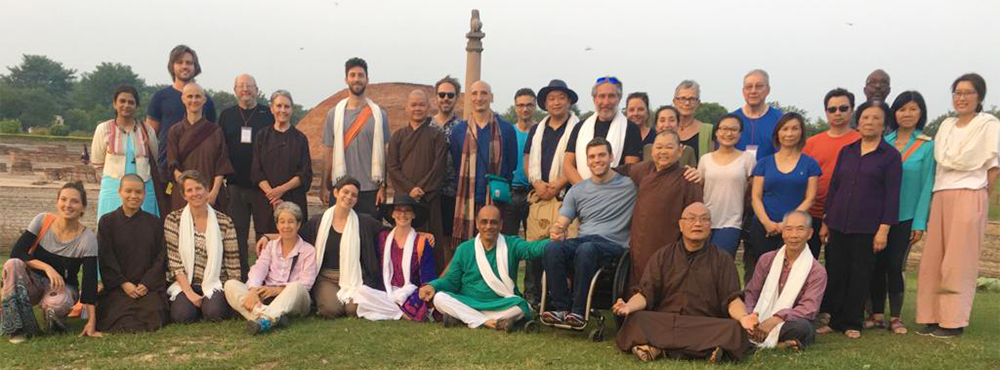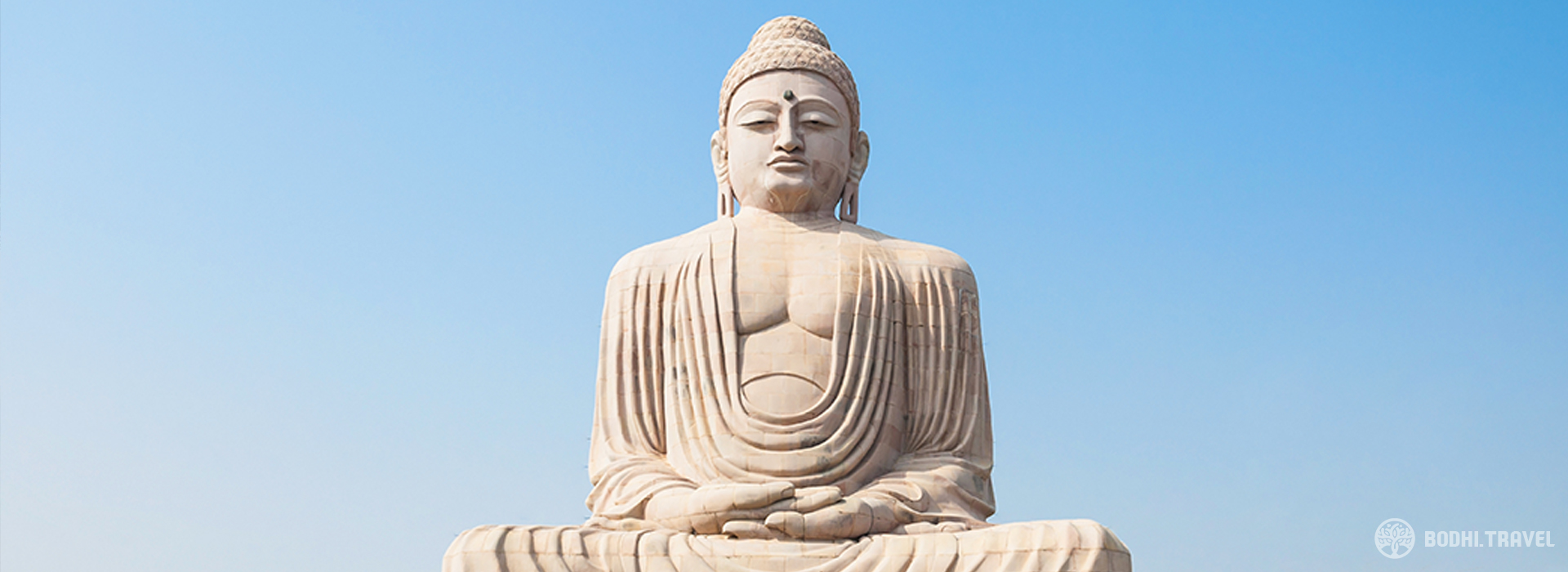
In the Footsteps of the Buddha (1/2)
SHANTUM SETH - Posted on May 23, 2019 - 5,073 Views
It’s a journey unlike any other in Bihar – one that retraced the Buddha’s life, through Vaishali, Kesaria and Patna, to Nalanda, Rajgir and Bodhgaya.
Shakyamuni Buddha discovered the Truth of overcoming suffering and bringing happiness to the individual, family and society. Before He died, the Buddha suggested that it would be of great benefit to those who are interested in His Teachings to make a pilgrimage to the places associated with His life.
2,600 years ago, a man named Siddhartha Gautama walked away from his kingdom, his family, into a land we now know as Bihar, where He attained Enlightenment. This can be a journey for a curious tourist but more a journey for a seeker, a pilgrimage that can transform us, make us better human beings.
We took the flight from Delhi to Patna. On a clear day you could see the Himalayas to the north, so I tried and ensured that I got a seat on the left side of the plane. As the plane began its descent, the dramatic scenery revealed itself – the beautiful river Ganga and its wide sand banks, the banana plantations to the north, the city to the south, the buffaloes grazing in the adjacent fields to the landing strip.
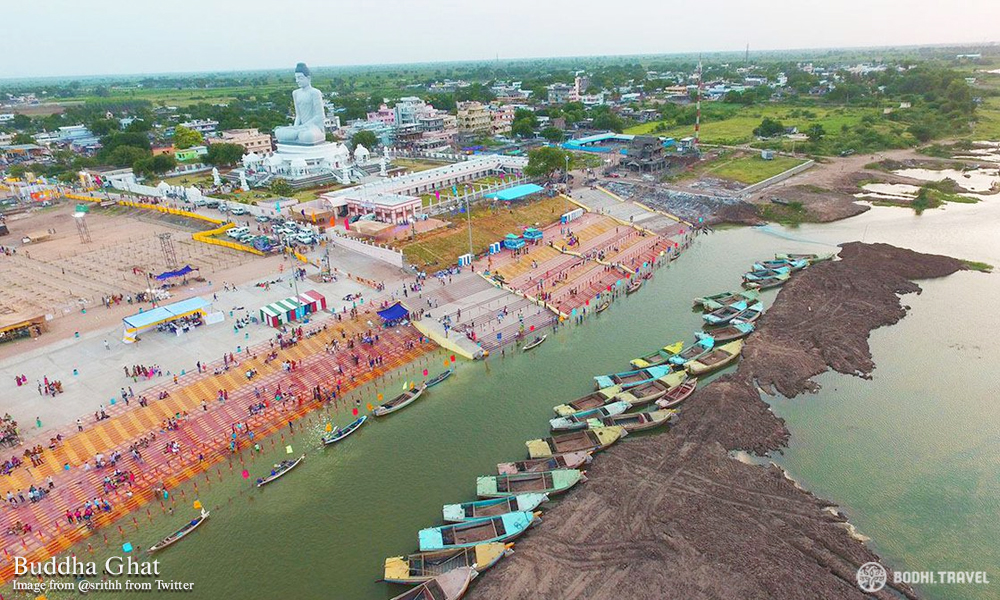
I knew that I shall be retracting the steps of the Buddha, but the sense of it hit me only when I saw the Ganga at close quarters. For it was here that He crossed to Vaishali. As He stepped on to the northern shore, the rains came, ending a famine in the land. The spot, Buddha Ghat, or Guatama Dwar, was named for posterity. Incredibly, the name has survived centuries. I talked with the boatmen whose ancestors must have rowed the Buddha across.
I walked away from the ghats that acted as a barricade to the Ganga that may swell and drown the city. For the Buddha had prophesied that as long as noble people lived, Patna would remain an important centre in the world and only three things could wipe out the city – fire, flood and internal feuding. Archaeologists have discovered layers of habitation interspersed with ash and destruction through flooding, the worst of which was in the 6th century CE. Internal dissension still plays an important role in Bihar politics.
Patna was the seat of the Mauryan Empire, of which Ashoka, the Buddhist king who spread the Dharma, was a part. Kumrahar, the original capital, still has remnants of the parliament. Eighty pillars were excavated at beginning of the previous century. Unfortunately, the excavation site was just a pool of water when I visited it. But you can try to imagine the wooden roof that might have been, and the emperor holding court.
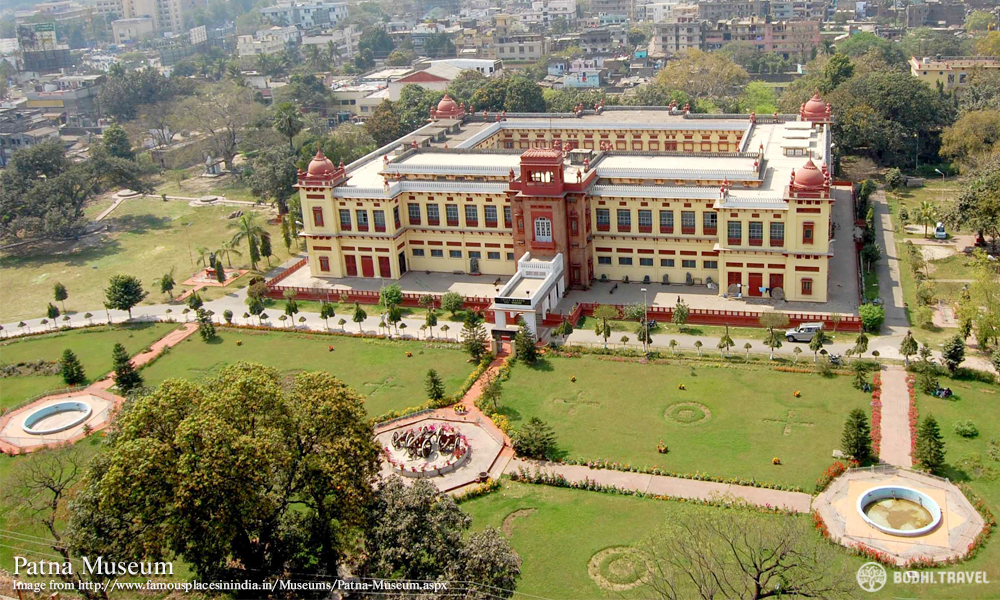
The Patna museum had some noteworthy pieces of Buddhist interest. There were a casket of the Buddha’s relics taken from Vaishali, tangkhas of Vajrayana Buddhism – religious cloth paintings of the Buddha brought by Rahul Sanskritayan in the 1930s, exquisite statues of Avalokiteshwara, Maitreya and other icons. There can be more care taken of these national treasures. As I mentioned it to one of the officials, he sipped his chai and leaned his oily hair back on to a priceless painting behind him which was blackened by the repeated smearing of the official’s hair oil.
I decided to take my co-pilgrims to retrace the last journey of the Buddha as told in the Mahaparinirvana sutra. We travelled north, crossing the river to Vaishali and then to Kesaria. We will then come back to Patna, to absorb what we have seen. And then to the south, going eastward first, along the Ganga till Bhaktiyarpur, and then southward, to Nalanda and Rajgir, terminating the journey at Bodhgaya, where the Buddha attained Enlightenment.
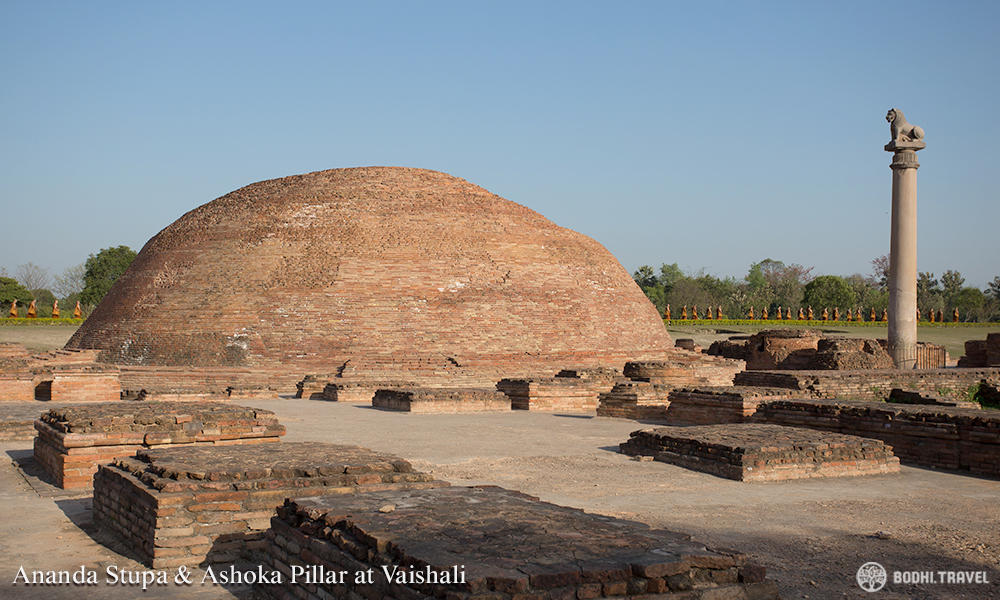
We were in a coach, and the group, consisting mainly of foreigners, had its first taste of the ‘real’ India. We drove across the 8km Mahatma Gandhi bridge, one of the longest river bridges in the world, to get to the northern bank and Vaishali. We saw the remnants of a stupa, where the Buddha’s relics once were. We visited a monastery with a tank, where legend was that monkeys fed the Buddha honey.
A few kilometres from Vaishali is a pillar, thought to be an Ashokan pillar, though I feel it is one that Ashoka probably modelled the other pillars on as it is not as aesthetically pleasing as the other pillars and has a slightly different style. It is dedicated to the Buddha, for the lion faces north, the direction the Buddha took when He left Vaishali. A spectacular Ashoka Pillar is in Lauriya Nandangarh in the same place where it was originally placed.
A little way away is a mango grove, which the courtesan Amarapali offered to the Buddha before she became a nun. It was enjoyable to stop for a picnic in mango groves as the Buddha did. I had made this journey twice, every year, for the last 31 years, and I enjoyed each journey and taking people along the Buddhapath.
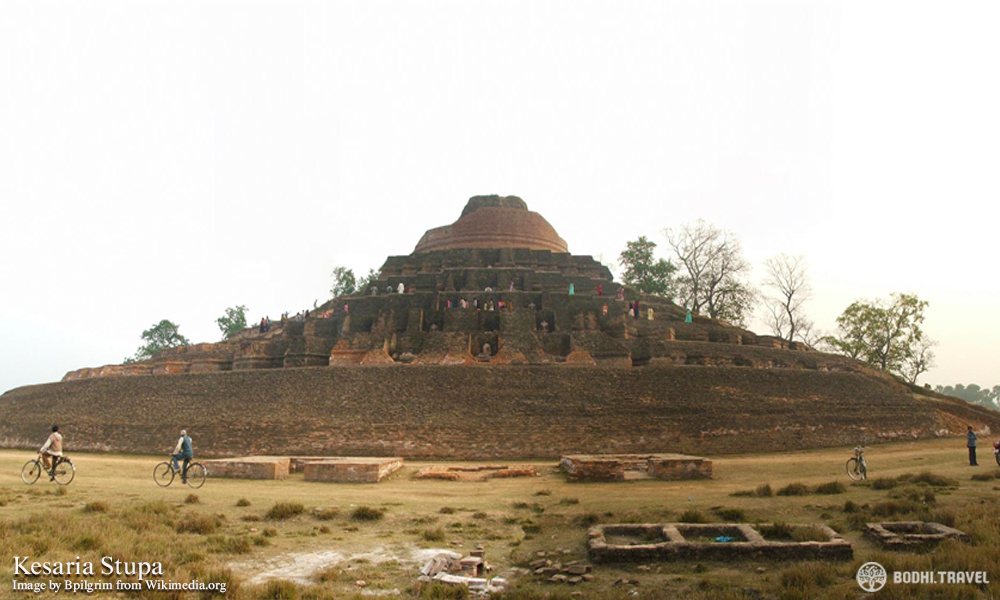
We went on, further north to Kesaria, where the people of Vaishali followed the Buddha, knowing, through His own prediction, that He would soon pass away. He was said to have given them His begging bowl and told them to go back. Some myths say He created a wide stream between Him and the Licchavis, so that they would have no option but to return. One of the biggest stupas in the world is located here, and it is thought that Borobudur in Indonesia had been based on it.
From here, the Buddha crossed into what is present day Uttar Pradesh, into Kushinagar, where He attained Mahaparinirvana. For the purpose of this article, I was requested to stay in Bihar, the land that the Buddha traversed many times. From Patna, as we travelled to Bhaktiyarpur, a short journey of 50km, I saw four sights – a dead body, an old man, a sick man and a monk. And the Teachings of the Buddha came to me strongly. I realised that the conditions of human suffering that motivated the young prince are still present today.
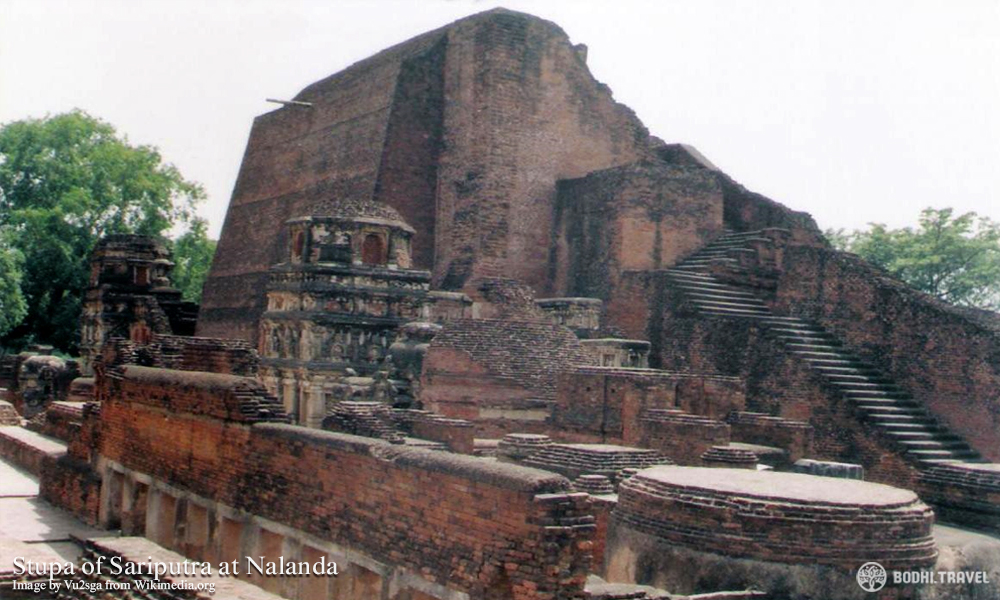
We reached Nalanda, the international university from the 5th to 12th century CE. The stupa of Shariputra, one of the Buddha’s foremost disciples, is here. It has been built over seven times, without the destruction of the previous structures.
The monks’ residence, with the simple cells, with a place for a lamp and books, even the stone bed, all evoked images of what might have been. The cells open out into a central courtyard, which had a statue of the Buddha and a teaching platform. The site museum includes a statue depicting events of the Buddha’s life, seals of the University of Nalanda and much more is worth seeing.
The grandeur of this hallowed place, was sobered, when I saw the burnt bricks. Bakhtiar Khilji destroyed the university in 1193. Nalanda tells us the history of Mahayana Buddhism and also the internal divisions, the corruption that set into the sangha, the conflict with Brahmanism and how the library with over 9 million manuscripts took six months to burn down.
Part 1 of two-part series on The Footsteps of Buddha is concluded. Join us next week for the second half of Shantum’s journey as he reached Bodh Gaya.
READ PART 2 HERE: https://bodhi.travel/blog/in-the-footsteps-of-the-buddha-2-2
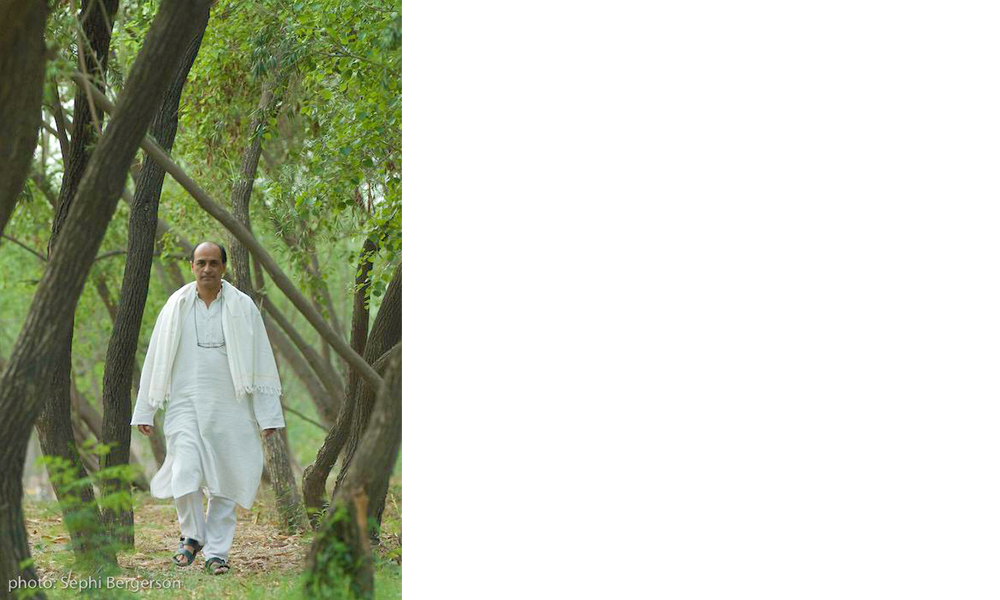
Shantum Seth, Buddhist master, is the guiding teacher of Buddhapath, a tour operator offering specialist Buddhist tours focusing on destinations related to the Life of the Buddha. www.buddhapath.com
Bodhi Travel is Buddhapath’s Singapore partner. We welcome enquiries from parties interested to join Shantum on his journey in the footsteps of the Buddha. Contact us now at [email protected].
